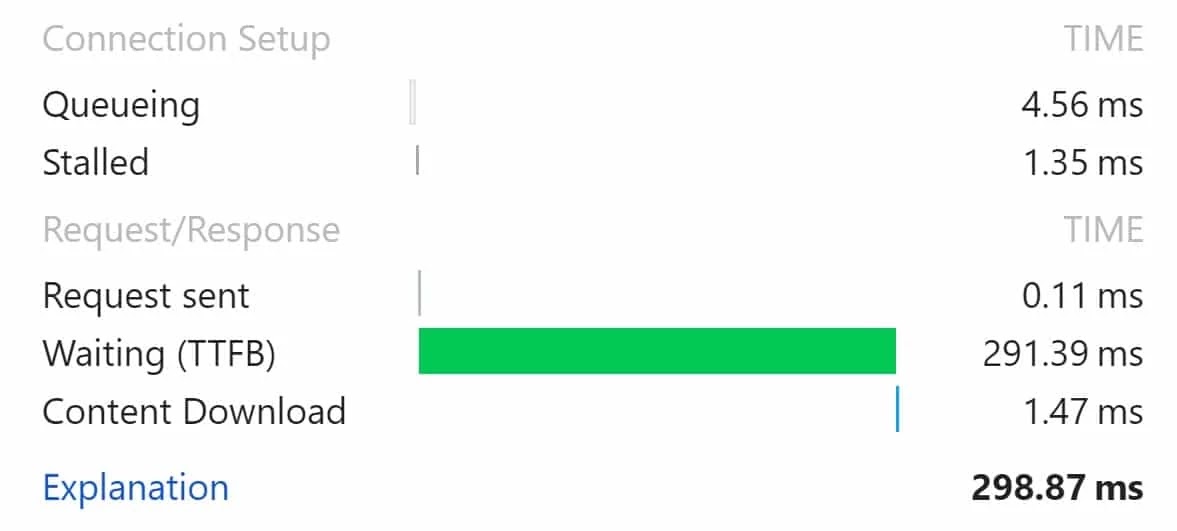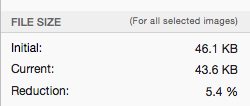Reducing server response time should be a primary goal of website owners and SEO experts.
Obtaining good user experience also includes fast page speed, less server response time, and much more. The first few seconds determine whether a customer stays on your page or competes with a competitor. For example, many of them expect page speed under 2 seconds. Long response time creates frustration for the user. Therefore server response time must be reduced.
In this article, learn about how to reduce server response time tips.
What is Server Response Time?
Server response time is the amount of time it takes for a web server to respond to a request from a browser. It is measured by TTFB (Time to First Byte). The TTFB is how many milliseconds to receive the first byte of the page after sending an HTTP request.

No matter how optimized the speed of your web pages. If your server response time is slow your pages will display more slowly.
Google says “You should reduce your server response time by 200milliseconds“.
Why is Server Response Time Important?
The result of a slow website is often harmful to the business. The loading time of your website greatly affects the user experience.

Chart showing elements of a slow loading website TTFB796ms TTFB should be improved.
Research shows that more than 40% of web users leave a site if it takes 3 seconds to load. In addition, the longer it has to load the more severe it ranks on the Program Results Page (SERP).
Response Time Effect:
- User Experience (UX)
- Search Engine Optimization(SEO)
Improving program optimization and user experience in digital marketing. This is often an honest enough reason for you to see what your server’s response time is and how to increase it.
Primary Factors that Affect Server Response Time:
The primary reasons for a slow WordPress website are:
Web Hosting – When your web hosting server is not configured properly it can damage the speed of your website.
Page size – Mainly images that are not optimized for online.
Poor plugins – If you are employing a poorly coded plugin. It can significantly disrupt your website.
WordPress Configuration – If your WordPress site is not serving cached pages. It will overload your server causing your website to slow down or crash completely.
External Scripts – External scripts such as advertisements font loaders etc. It can also have a huge impact on the performance of your website.
Now that you have just come to know what your WordPress website. Take a look at how to speed up your WordPress website.
ALSO READ: 12 Tips to Write an Article as a Professional Writer
How to Improve Server Response Time:
There are basic methods. You will need to optimize a few things to make your site faster.
1). Upgrade Your Hosting Plan:
The first thing after buying a domain is to buy a web hosting plan from a web hosting provider. I know, at first, we go cheap and sign up for shared hosting. However, this method slows down your site later as your site grows in users and content.
ALSO READ: Best Free Web Hosting Providers
Therefore, upgrading your hosting plan to VPS would be an option to improve the server’s reaction time. Once you are doing this, you will immediately get a huge difference.
2). Image Optimization:
We optimize our images in two areas: our WordPress theme and uploaded content.
For our WordPress theme, we use Codekit to ensure that all images are compressed losslessly. This ensures that the file size is as small as possible, without loss of quality.

We also educate all of our authors on the importance of saving images optimized for the web.
3). Optimize CSS and JS Files:
External files, JavaScript and CSS create a web page and affect how quickly it works. The practice of shrinking and shrinking scripts is a popular solution when it comes to files. This maintains a large amount of available data but does not allow the amount to compromise performance.
Distribute JS and CSS files as external or internal depending on their size and importance. Improve loading time by placing smaller files as part of an HTML file internally. Finally, make the cache easier by keeping obscure files external.
4). Keep WordPress Lightweight:
WordPress allows you to easily create beautiful websites. There are attractive themes and many plugins to customize it. However, be careful not to overload your subject as it may slow down the response time.
If you are using a WP template then try to stick to simple and Lightweight Theme ones and avoid adding too many plugins.
Use the website monitoring tool and check which plugins are slowing down your website. Remove unused plugins and disable those that use CPU resources.
5. Configure Caching:
Caching ensures fast delivery to visitors. Without caching a browser requests server assets every time a page is loaded instead of accessing them from a local or broker cache.
There are WordPress plugins that allow you to store files locally on a user’s computer. The files are then reused during future visits. This practice is called caching. Speeds up charging time and ensures a better user experience.
6. Use CDN:
CDN is an acronym for Content Delivery Network that primarily speeds up your website/blog. It provides web content to users based on their geographical location. This means significant performance improvements for site users.
7. Use Cache Plugins:
The cache plugin generates static files of your content and provides it to the user when the user accesses your page/post. This dramatically reduces server response time.
Conclusion
As you can see, a faster loading can improve website visitor engagement. The techniques we have discussed include many basic and intermediate improvements that you can implement to optimize your WordPress site.
We hope this article helped you speed up your site. You may also want to check out our article about SEO Friendly URL And Permalink Structure.
If you liked this article, please Join Telegram Channel and subscribe to our YouTube channel for WordPress video tutorials. You can also find us on Instagram, Twitter, and Facebook.


